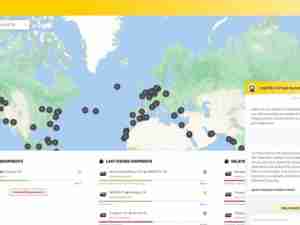No matter what business you are in, tracking lifetime value (LTV) helps to retain existing customers and generate loyalty that creates lasting relationships. LTV is a key tool when it comes to marketing and provides a consistent way to define high-value customers and drive retention. It doesn’t matter if you are offering a product or a service, calculating LTV gives you a bird’s eye view of a customer’s history and pinpoints who is most likely to be a returning customer.
In recent years, the relationship between logistics business decisions and LTV have become closely tied together. Today’s customers demand that they be given a variety of options on how to order products and receive them, and care overwhelmingly about sustainability. It's important to understand how a brand’s supply chain management strategy affects how consumers perceive their business, which in turn can have a huge impact on LTV. New-age logistics companies like Veho, Pandion, WARP, and GoBolt have cropped up to give shippers fully customizable options based on their end customers' wants and needs.
Lean into Customer Segmentation
Different types of customers want different things. Some value how fast a product arrives while others care about cost-effectiveness. Much of this is driven by what retailers or brand’s end-customers care about the most. For example, offering different delivery options like express, standard, or free allows different kinds of consumers to tailor their experience based on their willingness to pay, urgency, and overall loyalty. By segmenting delivery offerings by audience, brands can create easily customizable journeys that meet customers’ expectations and deliver value where they want it most. Brands that align their supply chain strategy with specific customer segments are bound to see an increase in customer satisfaction, loyalty, and repeat purchases.
Implement Flexible and Scalable Practices
Having the right relationships and technology in place to manage the ebb and flow of a supply chain that is heavily affected by consumer demand, seasonality, the overall economy, and global events allows brands to respond quickly and flexibly. Diversifying carriers, investing in technology that automates many of the manual supply chain management processes, and building strong relationships result in a nimbler supply chain that ultimately leads to a higher LTV. Meeting consumer demand consistently with transparent communication is what keeps brands competitive and attracts and retains customers while increasing margins and profits.
Leverage Data and Analytics
Today’s businesses know that leveraging data and analytics is integral to gaining insights into customer behavior, preferences, and feedback. For supply chain management, it’s also important for forecasting demand, managing inventory both for doorstep delivery and in-store, scheduling production, and tracking the performance of individual SKUs. Implementing technology that takes route optimization, traffic analysis, real-time tracking, and predictive maintenance into account leads to cost savings and faster deliveries. Which in turn, reduces environmental impact which in turn leads to a better customer experience, engagement, and loyalty. This data can provide real-time insights into the entire supply chain that can then be passed along to the customer increasing LTV.
Transparency and Trust
Transparency and tracking technology have long been table stakes in rideshare and food delivery technology but the penetration rate in the freight market is far behind. Shippers that have access to real-time location and status data empower them to make better decisions, optimize asset utilization, cut costs, communicate better with customers, and reduce environmental impact. Ultimately transparency leads to trust, giving businesses a competitive edge in acquiring and retaining customers with better communication capabilities. In addition, it’s easier to sell higher-value services to customers who already trust in your brand.
Foster Collaboration
Supply chain management is rarely accomplished in a silo. Today’s supply chains are increasingly complex and interconnected especially as merchants move towards a more multichannel approach. Because of this nature, they’re also more prone to serious impacts due to disruption from larger events like the pandemic or a cyberattack or more minor incidents like weather delays. Collaboration and integration with partners up and down the supply chain (both internally and externally) improve information sharing, communication, and problem-solving. Establishing real-time visibility and unified processes with partners ultimately leads to a smoother journey from manufacturer to end consumer. Open collaboration builds higher customer value and engagement leading to a higher LTV.
Big logistics and old-school freight companies have been very slow to meet the new expectations of consumers in the Amazon era. As consumers increasingly prioritize convenience, sustainability, and customization, businesses must align their logistical strategies with these evolving demands to enhance customer satisfaction and drive loyalty. By embracing segmentation, collaboration, data and analytics, transparency, and flexible practices, businesses can not only optimize LTV but also strengthen their competitive edge in an increasingly interconnected marketplace.









